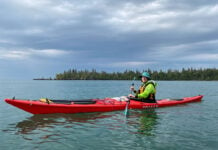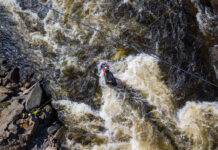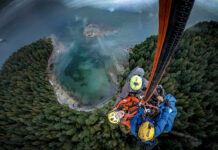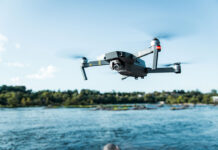How can I boost the range of my VHF marine radio?
Handheld VHF marine radios work on a line of sight principle, with the transmission range being a function of the unit’s wattage. For example, a five-watt radio has a transmission range of about five nautical miles. Radio repeater stations placed in elevated areas along coastal regions greatly increase the range of transmission—this is why compact marine radios (and even basic weather radios) can pick up weather forecast broadcasts almost everywhere sea kayakers like to paddle.
But dead zones do exist. Sea kayak instructor and Paddlinghq.com founder David Johnston had problems receiving forecasts and making a call to the Coast Guard to file a float plan on Lake Superior’s remote Michipicoten Island. “It’s minerals in the rocks that kill reception,” says Johnston. “We had to get offshore about half a kilometer to pick up the Coast Guard.” Similarly, hazy or cloudy weather can also reduce reception.
Since radio waves are deflected and obstructed by landforms, going offshore is the best way to boost range. Climbing to an elevated point can also work—the idea is to open up your VHF’s sight lines. Johnston points out a basic principle that can also improve transmission: Hold the radio as vertical as possible to keep its antenna high. Length of antenna also dictates a radio’s range. If you’re headed far off the beaten path, consider purchasing a longer aftermarket antenna that’s compatible with your radio.
This Skills Q&A article originally appeared in Adventure Kayak, Summer/Fall 2013.








